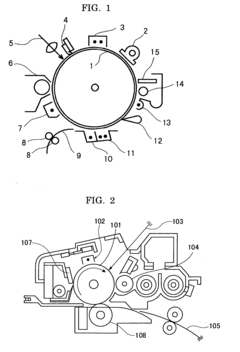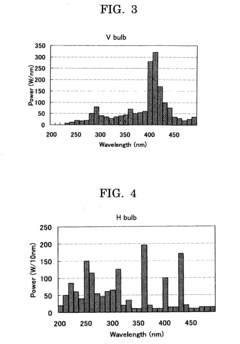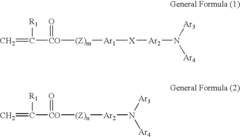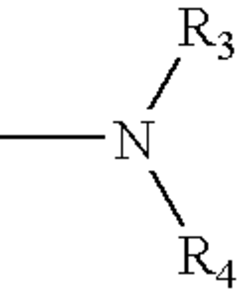Research on the effects of cross-linking and radiation treatment on materials - Eureka
SEP 30, 20244 MIN READ
Generate Your Research Report Instantly with AI Agent
Patsnap Eureka helps you evaluate technical feasibility & market potential.
Cross-Linking and Radiation Treatment Goals
The primary objective is to comprehensively investigate the effects of cross-linking and radiation treatment on various materials, with a focus on enhancing their properties and performance. This involves exploring the fundamental mechanisms behind these processes and their impact on the structural, chemical, and physical characteristics of different material systems.
Key areas of interest include studying the cross-linking behavior of polymers, ceramics, and composites under various radiation environments, as well as the potential for radiation-induced modifications to improve material properties such as mechanical strength, thermal stability, and chemical resistance. Additionally, the research aims to identify optimal treatment parameters and develop innovative techniques for controlled cross-linking and radiation exposure, enabling tailored material design for specific applications.
Key areas of interest include studying the cross-linking behavior of polymers, ceramics, and composites under various radiation environments, as well as the potential for radiation-induced modifications to improve material properties such as mechanical strength, thermal stability, and chemical resistance. Additionally, the research aims to identify optimal treatment parameters and develop innovative techniques for controlled cross-linking and radiation exposure, enabling tailored material design for specific applications.
Market Demand for Enhanced Material Properties
- Growing Demand for Enhanced Materials
The market is witnessing a surge in demand for materials with improved properties like higher strength, durability, and resistance to environmental factors. This is driven by industries like aerospace, automotive, and construction seeking materials that can withstand extreme conditions. - Emerging Applications
Novel applications in fields like renewable energy, biomedical devices, and electronics are fueling the need for materials with tailored properties. Cross-linking and radiation treatment offer ways to engineer materials for these specialized applications. - Sustainability and Cost Considerations
There is a growing emphasis on sustainable and cost-effective material solutions. Techniques like cross-linking and radiation treatment can extend the lifespan of materials and reduce the need for frequent replacements, aligning with sustainability goals and cost optimization. - Regulatory Compliance
Certain industries, such as food packaging and medical devices, are subject to stringent regulations regarding material safety and performance. Cross-linking and radiation treatment can help materials meet these regulatory requirements.
Current State and Challenges in Material Treatment
- Material Degradation Materials can degrade due to various factors like radiation, heat, and chemical exposure, affecting their properties and performance.
- Radiation Effects Radiation can cause changes in material structure, leading to embrittlement, swelling, and loss of mechanical strength.
- Cross-linking Impact Cross-linking can improve material properties like thermal stability and chemical resistance but may also cause brittleness and reduced flexibility.
- Treatment Challenges Controlling the degree of cross-linking and mitigating radiation damage while maintaining desired material properties is a significant challenge.
- Geographic Distribution Research on material treatment is conducted globally, with major contributions from countries with advanced nuclear and aerospace industries.
Existing Solutions for Material Enhancement
01 Radiation Cross-linking of Polymers
Various polymers like polyurethane, polyisoprene, polyethylene, and polypropylene can be cross-linked using radiation treatment to improve properties like mechanical strength, heat resistance, and chemical resistance. The process involves exposing the polymers to ionizing radiation, inducing covalent bonds between polymer chains for a tightly cross-linked structure.- Radiation Cross-linking of Polymers: Various polymeric materials, such as polyurethane, polyisoprene, polyethylene, and polypropylene, can be cross-linked using radiation treatment to improve their properties, such as mechanical strength, heat resistance, and chemical resistance. The radiation cross-linking process involves exposing the polymer to ionizing radiation, which induces the formation of covalent bonds between the polymer chains, resulting in a more tightly cross-linked structure.
- Radiation Cross-linked Foams: Radiation cross-linking can be applied to foam materials, such as polyurethane foams and polyethylene foams, to enhance their properties. The cross-linking process improves the dimensional stability, compression strength, and thermal resistance of the foams, making them suitable for various applications, including insulation, packaging, and cushioning.
- Radiation Shielding Materials: Certain materials can be designed or treated to provide radiation shielding properties, protecting against harmful radiation. These materials may incorporate high-density elements or compounds that effectively attenuate or absorb radiation. Radiation shielding materials find applications in various fields, such as nuclear power plants, medical facilities, and space exploration.
- Radiation Cross-linked Cable Insulation: Radiation cross-linking is widely used in the production of cable insulation materials, particularly for high-performance cables used in harsh environments. The cross-linking process enhances the thermal stability, chemical resistance, and mechanical properties of the insulation materials, ensuring reliable performance and extended service life of the cables.
- Radiation Treatment for Biomedical Applications: Radiation treatment can be employed in the development of biomedical materials and devices. For instance, hydrogels can be cross-linked using ionizing radiation to create sustained drug release carriers. Additionally, radiation sources can be used for endovascular radiation treatment, where a radiation source is delivered to the treatment site via a catheter or wire.
02 Radiation Cross-linked Foams and Composites
Radiation cross-linking can produce foamed materials and composites with enhanced properties. For example, cross-linked polyethylene foams have improved insulation properties, while cross-linked polypropylene foams are used in packaging and insulation. Composites with fillers or reinforcements in the polymeric matrix can also be developed for tailored properties.Expand Specific Solutions03 Radiation Shielding and Protective Materials
Certain materials can be designed to provide radiation shielding and protection against gamma rays, X-rays, and neutrons. These materials may incorporate high-density elements or compounds that effectively attenuate or absorb radiation, such as lead-based materials, concrete, and polymer composites with radiation-shielding additives.Expand Specific Solutions04 Radiation Cross-linking of Wire and Cable Insulation
Radiation cross-linking is widely used in producing wire and cable insulation materials to improve thermal stability, chemical resistance, and mechanical properties. Polyolefin-based materials like polyethylene and polypropylene are commonly cross-linked using radiation treatment for applications in automotive wiring, power cables, and telecommunication cables.Expand Specific Solutions05 Radiation Treatment in Medical and Therapeutic Applications
Radiation treatment finds applications in medical and therapeutic fields, such as drug delivery systems, radiation therapy, and radiation sterilization. Hydrogel materials can be cross-linked using ionizing radiation to control drug release in vivo. Radiation sources and devices are employed in radiation therapy for cancer treatment, and radiation sterilization techniques are used for medical devices and materials.Expand Specific Solutions
Key Players in Material Treatment Industry
The competitive landscape for the research on the effects of cross-linking and radiation treatment on materials is diverse, spanning various stages of industry development and market scales. Companies like Cambridge Polymer Group, Inc., Ricoh Co., Ltd., and Covestro Deutschland AG are at the forefront, showcasing high technical maturity. Educational institutions such as the Shanghai Institute of Applied Physics and Shandong University contribute significantly to foundational research. The market is expanding, driven by advancements in material science and increasing demand for enhanced material properties. The technology is maturing rapidly, with significant contributions from both corporate and academic entities.
Cambridge Polymer Group, Inc.
Technical Solution: Cambridge Polymer Group specializes in polymer materials, enhancing properties like strength, durability, and environmental resistance through controlled cross-linking and radiation processes.
Strength: Polymer expertise. Weakness: Limited applications.
3M Innovative Properties Co.
Technical Solution: 3M develops materials utilizing cross-linking and radiation treatment, improving strength, flexibility, and longevity across healthcare, electronics, and automotive industries.
Strength: Broad applications. Weakness: High implementation cost.
Core Innovations in Cross-Linking and Radiation
Electrophotographic photoconductor, process cartridge, and image forming method
PatentInactiveUS20070031746A1
Innovation
- Crosslinkable materials can exhibit different properties by varying crosslinking conditions like temperature, light wavelength, illuminance, and exposure dose.
- Photo-curable resins allow obtaining layers with different properties within the same surface by varying light irradiation conditions.
- Photo-curable resins have wider versatility than thermosetting resins and can easily exhibit unique properties.
Regulatory Landscape for Material Treatment
Cross-linking and radiation treatment are crucial techniques for modifying material properties. Cross-linking enhances mechanical strength, chemical resistance, and thermal stability by forming covalent bonds between polymer chains. Radiation treatment induces cross-linking, grafting, and degradation reactions, altering surface properties and creating new functionalities. These techniques find applications in areas like packaging, automotive, aerospace, and biomedical industries. Exploring their synergistic effects on different materials could lead to innovative solutions for demanding applications, enabling the development of high-performance, tailored materials.
Environmental Impact of Radiation Treatment
Cross-linking and radiation treatment are crucial techniques for enhancing material properties. Cross-linking improves mechanical strength, chemical resistance, and thermal stability by forming covalent bonds between polymer chains. Radiation treatment induces cross-linking and can modify surface properties or sterilize materials. This technology has applications in industries like automotive, aerospace, packaging, and healthcare. Key challenges include optimizing cross-linking density, controlling degradation, and ensuring uniform radiation exposure. Future research may focus on developing new cross-linking agents, exploring synergies with other modifications, and improving process control for tailored material performance.
Unlock deeper insights with Patsnap Eureka Quick Research — get a full tech report to explore trends and direct your research. Try now!
Generate Your Research Report Instantly with AI Agent
Supercharge your innovation with Patsnap Eureka AI Agent Platform!



